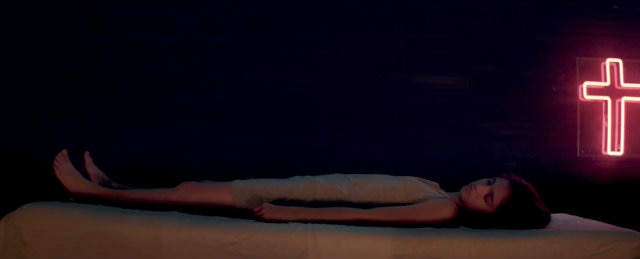
Stephen Borunda/Special to The Santiago Times
SANTIAGO – As the #MeToo hashtag increases in prominence, more and more women continue to publicly share their personal stories of sexual harassment and abuse at the hands of men. While these women’s heartfelt written words describe the inequality between the sexes, Marialy Rivas’ Princesita visually depicts the horrific sexual abuse that some females encounter.
Up until this point in her career, Rivas has been best known for her 2012 film Joven y alocada; a movie that follows a young woman exploring her sexuality while living under the tight reigns of her evangelical parents in Santiago. While the dramaturgies of both films focus upon female teenagers, Rivas’ latest film is forged with more interesting and impactful protagonists and story beats. Joven y alocada follows a young woman finding herself; Princesita follows a young woman who gradually learns to take the power to define herself.
Set in southern Chile, Princesita follows Tamara (masterfully played by newcomer Sara Caballero) – a 12-year-old girl who was born into a cult. The cult is initially depicted as practicing some form of theism and its members show appreciation for multiple deities. The cult’s leader Miguel (veteran Chilean actor Alejandro Alonso) emphasizes the interconnectivity between all of the cult’s members and the universe itself. The film’s liminal scene shows Tamara, Miguel, and other fellow members patting and then gently hitting each other to somehow strengthen such bonds. Those warm moments reveal themselves to be duplicitous when Miguel begins to imply that the intertwined nature of the group means that Tamara’s body belongs to him. This behavior is typical of Miguel. We later see that he has sex with any woman he desires in the commune and the film suggests that he may engage in homosexual relations as well. Miguel, misappropriating spiritual ideas, informs Tamara that her purity will make her the perfect mother for his messiah-like child. Tragically, Tamara is originally pleased by Miguel’s demand to bear his child.

people Tamara interacts with outside of the commune.
Here, we find the film’s true strength – its ability to stay within the perspective of Tamara. The film is titled Princesita because this word describes how Tamara views herself, as a result of of how society has constructed her identity. Miguel regularly emphasizes the importance of purity and procreation for the female body and identity. Therefore, Tamara begins to see herself as a successor to the Virgin Mary. While spectators might find themselves initially perplexed and saddened by such scenes, the film is staying true to the reality of a child victim who – because of societal power dynamics – does not yet even understand that she is a victim. Her actions and her inner-thoughts that narrate the film continually demonstrate her misunderstandings about the nature of her macabre situation. Miguel is the face of the commune and exudes a philosophical understanding of life that Tamara admires. Still a child, and one that has lived a secluded life, Tamara has no way of yet knowing that Miguel is evil. After all, Miguel is the moral compass for the group.
Rivas further explores Tamara’s ignorant victimhood when Miguel begins to regularly rape Tamara without her conscious knowledge. Because of the drugs in her system, which she has been trained to take since birth, both her perspective and, correspondingly, the perspective of the audience are altered. Colors such as red and blue flood the screen; the sounds of the real world are drowned out and are replaced by those reminiscent of radio static. These auditory and visual sensations overwhelm spectators in a manner that mirrors Tamara’s own experiences.

Eventually, Tamara begins to ask sexual questions that are far too detailed for her age to her teacher at school. Tamara’s carefully composed illusions about her identity then begin to unravel. The visits of her concerned teacher to the commune and Miguel’s subsequent responses that are filled with anger push Tamara into the arms of her attractive male classmate. This decision has devastating costs for the film’s characters, as Miguel does not take well to sharing Tamara’s affection with another.
Many recent films, such as Colonia Dignidad, have confronted the cults and abuses of patriarchy in Chile. However, where such films fall short is that the antagonists in the plots are all too obvious to both subject and the spectator. Alternatively, Rivas’ film depicts a young woman who first needs to even understand that there are patriarchal systems surrounding her. Fortunately, by the film’s denouement, Tamara is able to gain agency. In a spectacular finale, She is able to expose and ruthlessly destroy the Foucauldian, sexist power structures that had held her hostage for so long.

perverse than the last.
Princesita very clearly – and successfully – gives us insight into how powerful men attempt to manipulate aspects of the feminine identity – primarily those revolving around chastity and childbirth. In Tamara’s case, these virtues were not ones established for her safety but for Miguel’s sick pleasure. Rivas’ film perhaps then even speaks – and says #MeToo – for those female children who are unable to speak for themselves. After screening such a multidimensional creation, this reviewer cannot wait for Rivas’ next film and the shrouded aspects of society it will bring to light.



